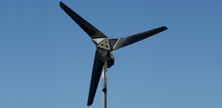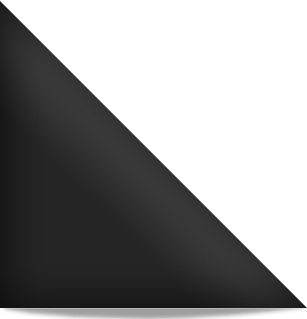Wind Turbines

Wind Turbines accredited under the Microgeneration Certification Scheme as an MCS approved technology. This means as an MCS Accredited installer you are able to install MCS Accredited Wind Turbines and offer consumers the Feed in Tariffs.
Wind turbines harness the power of the wind and use it to generate electricity which can be fed into the national grid and generate a significant income through the UK Feed in Tariffs. Small wind turbines known as "microwind" or "small-wind" turbines can produce electricity to help power the lights and electrical appliances in a typical home.
In the UK we have 40% of Europe's total wind energy, however only 0.5% of our electricity requirements are currently generated by wind power. Over the next few decades there are going to be significant investments into Wind energy with the continuation of the domestic and commercial Feed in Tariffs and large investment into wind farms.
Wind power varies greatly with wind speed and on an average day can fluctuate dramatically. Individual turbines vary in size and power output from a few hundred watts to two or three megawatts (as a guide, a typical domestic system would be 1 - 6 kilowatts, depending on the location and size of the home).
How do wind turbines work?
Wind turbines use large blades to catch the wind. When the wind blows the blades are forced round, driving a turbine which generates electricity. The stronger the wind, the more electricity produced.
There are two typical types of domestic wind turbine:
- Mast mounted: these are free standing and are erected in a suitably exposed position, often around 2.5kW to 6kW
- Roof mounted: these are smaller than mast mounted systems and can be installed on the roof of a home where there is a suitable wind resource. Often these are around 1kW to 2kW in size
Wind Energy and your home
Wind speed increases with height so it's best to have the turbine high on a mast or tower. Generally speaking the ideal siting is a smooth-top hill with a flat, clear exposure, free from excessive turbulence and obstructions such as large trees, houses or other buildings.
Please note that the electricity generated at any one time by a wind turbine is highly dependent on the speed and direction of the wind. The windspeed itself is dependent on a number of factors, such as location within the UK, height of the turbine above ground level and nearby obstructions. Ideally, you should undertake a professional assessment of the local windspeed for a full year at the exact location where you plan to install a turbine before proceeding. In practice, this may be difficult, expensive and time consuming to undertake. Therefore it is recommended that, if you are considering a domestic building mounted installation and electricity generation is your main motivation, then you only consider a wind turbine under the following circumstances:
- The local annual average windspeed is 6 m/s or more. An approximate figure for your location can be checked on BERR website.
- There are no significant nearby obstacles such as buildings, trees or hills that are likely to reduce the windspeed or increase turbulence
If you are in any doubt, please consult a suitably qualified professional.
Planning issues such as visual impact, noise and conservation issues also have to be considered. System installation normally requires permission from the local authority.
Stand-alone or grid-connected system?
Small-scale/micro wind power is particularly suitable for remote off-grid locations where conventional methods of supply are expensive or impractical. Most small wind turbines generate direct current (DC) electricity. Off-grid systems require battery storage and an inverter to convert DC electricity to AC (alternating current - mains electricity).
You also need a controller to divert power to another useful source (e.g. space and/or water heaters) when the battery is fully charged.
It's common to combine this system with a diesel generator or other fuel source for use during periods of low wind speeds. A combined wind and diesel system gives greater efficiency and flexibility than a diesel only system. It allows the generator to be used at optimum load for short periods of time to charge batteries when there is little wind, rather than by constant use at varying loads.
Wind systems can also be installed where there is a grid connection. A special inverter and controller converts DC electricity to AC at a quality and standard acceptable to the grid. No battery storage is required. Any unused or excess electricity can be exported to the grid and sold to the local electricity supply company through the Feed in Tariffs eligible for consumers using a Microgeneration Certification Scheme approved installer & MCS Certified Wind Technology.
Cost and maintenance
Systems up to 1kW will cost around £1500 whereas larger systems in the region of 2.5kW to 6kW would cost between £11,000 - £19,000 installed. These costs are inclusive of the turbine, mast, inverters, battery storage (if required) and installation, however it's important to remember that costs always vary depending on location and the size and type of system.
MCS Accredited Wind Turbines can have a life of up to 22.5 years but require service checks every few years to ensure they work efficiently. For battery storage systems, typical battery life is around 6-10 years, depending on the type, so batteries may have to be replaced at some point in the system's life.
The estimated costs are often quickly covered by Feed in Tariffs which can be offered by Microgeneration Certification Scheme (MCS Accredited) Installers who offer MCS Accredited Wind Equipment.
The estimated costs are often quickly covered by the Feed in Tariffs which can be offered by Microgeneration Certification Scheme (MCS Accredited) Installers who offer MCS Accredited Wind Turbines.
Call our MCS team on 0800 882 4308 to start your MCS for Wind Turbines.





















